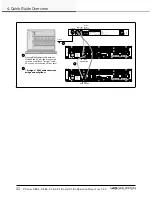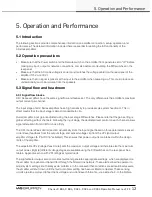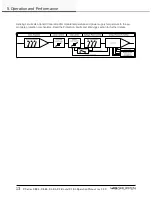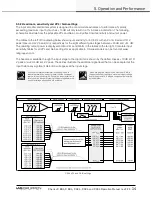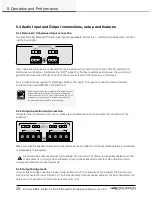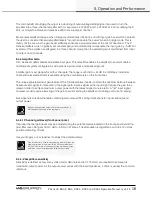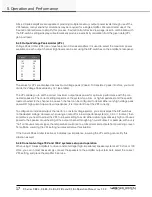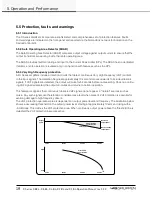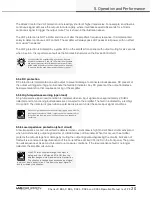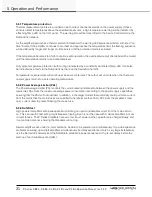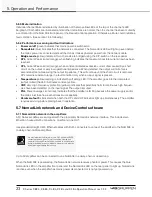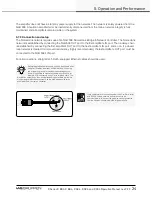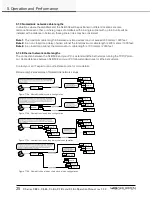
5. Operation and Performance
12
C Series C 88:4, C 68:4, C 48:4, C 28:4 and C 16:4 Operation Manual rev 2.2.3
5. Operation and Performance
5.1 Introduction
The following sections provide comprehensive information on amplifier connection, setup, operation, and
performance. The detailed information included here is essential to realizing the full functionality of the
C Series amplifiers.
5.2 Operation precautions
▸
Make sure that the Power switch and the Remote switch on the amplifier front-panel are set to “off” before
making any input, output or network connections, and also before manipulating the DIP-switches on the
rear-panel.
▸
Make sure that the AC mains voltage is correct and matches the voltage printed on the rear-panel of the
amplifier (115 V or 230 V).
▸
Make sure that no signal is present at the input to the amplifier when powering up. This could produce an
unintentionally loud initial volume from the speakers.
5.3 Signal flow and headroom
5.3.1 Signal flow blocks
All C Series amplifiers have the same signal flow and feature set. The only difference is the amplifier’s maximum
output current per channel.
The input stage of all C Series amplifiers has a high sensitivity to provide ample system headroom. This in
effect means that the input stage is almost impossible to clip.
Overall amplifier input gain is adjusted using the input stage DIP-switches. Please note that the gain setting is
global, affecting all four channels. Following the input stage, the dedicated level control on each channel allows
signal attenuation from 0 dB to minus infinity.
The CPL (Current Peak Limiter) section dynamically limits the input signal based on three parameters: sensed
current level, feedback from the output stage, and sensed voltage clip from the VPL (and output
amplifier voltage clip if “Soft Clip” activated). This ensures that power output is maintained within the design
limits of the amplifier.
The adjustable VPL (Voltage Peak Limiter) sets the maximum output voltage and therefore also the maximum
output power. Eight (8) different voltage stages are available using the DIP-switches on the rear-panel. See
table in Appendix section with VPL ratings at typical loads.
The sophisticated output section monitors faults and generates appropriate warnings, which are displayed on
the amplifier front-panel and transmitted through the NomadLink network. These alerts allow the operator to
adjust system settings and thereby avoid problems. In the rare event that conditions are extraordinarily severe,
the amplifier will shut down until the fault or problem setting has been rectified or adjusted. These sensing
circuits are also employed to feed back voltage and current level information, via a side chain, to the limiters.














